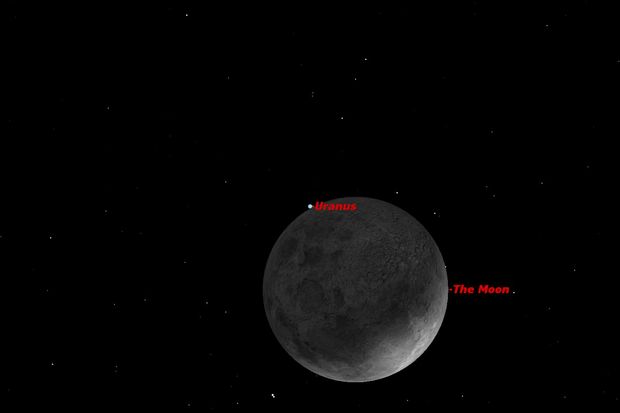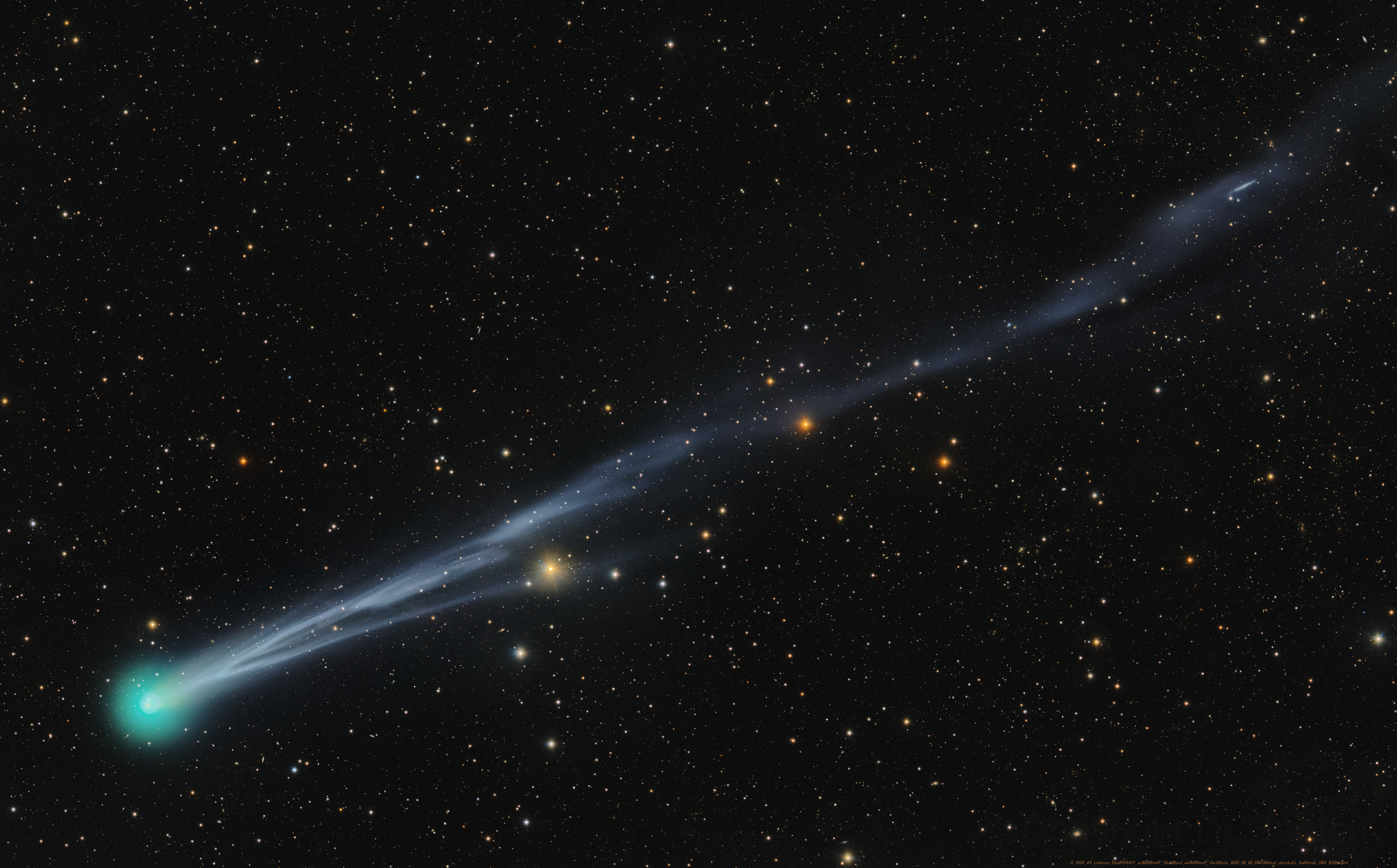Watch the Moon Photobomb Uranus in Slooh Occultation Webcast Today

The planet Uranus will slip behind the moon today (June 11) in a celestial event known as an occultation, and you have a chance to watch it live online.
The online Slooh Community Observatory will stream live telescope views of Uranus as it is blocked by the moon in a free webcast at 3 p.m. EDT (1900 GMT) that can be seen at the Slooh website: http://www.slooh.com.
You can also watch the Uranus webcast on Space.com, courtesy of Slooh. The webcast will feature live views from Slooh's partners in Australia, since the Uranus occultation will only be visible from there and New Zealand.
"Whether we call it an occultation, eclipse or photobomb, it's a very cool event when the moon covers up that strange, green often mispronounced world," Slooh astronomer Bob Berman said in a statement. "Watching Uranus telescopically vanish behind the detailed sunlit portion of the moon and then suddenly emerge from the lunar dark side should be pretty dramatic."
Berman and Slooh host Erid Edelman will provide live commentary of the occultation of Uranus. Viewers can submit questions about the event live on Twitter using the hashtag #UranusPhotobomb.
While observers outside of Australia and New Zealand will not be able to see the occultation of Uranus, they may be able to see Uranus near the crescent moon in a telescope, depending on local weather and night sky light pollution conditions.
"This presents an excellent opportunity to spot this distant ice giant with a pair of binoculars or a small telescope," Slooh representatives wrote in a skywatching alert.
Breaking space news, the latest updates on rocket launches, skywatching events and more!
Editor's note: If you observe Uranus near the moon in a telescope and capture an amazing view that you'd like to share with Space.com, you can send in photos and comments to managing editor Tariq Malik at: spacephotos@space.com.
Email Tariq Malik at tmalik@space.com or follow him @tariqjmalik and Google+. Follow us @Spacedotcom, Facebook and Google+. Original article on Space.com.

Tariq is the award-winning Editor-in-Chief of Space.com and joined the team in 2001. He covers human spaceflight, as well as skywatching and entertainment. He became Space.com's Editor-in-Chief in 2019. Before joining Space.com, Tariq was a staff reporter for The Los Angeles Times covering education and city beats in La Habra, Fullerton and Huntington Beach. He's a recipient of the 2022 Harry Kolcum Award for excellence in space reporting and the 2025 Space Pioneer Award from the National Space Society. He is an Eagle Scout and Space Camp alum with journalism degrees from the USC and NYU. You can find Tariq at Space.com and as the co-host to the This Week In Space podcast on the TWiT network. To see his latest project, you can follow Tariq on Twitter @tariqjmalik.
